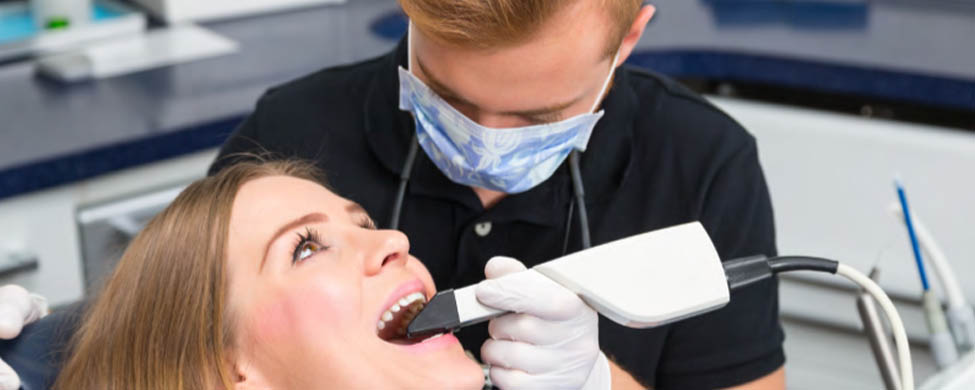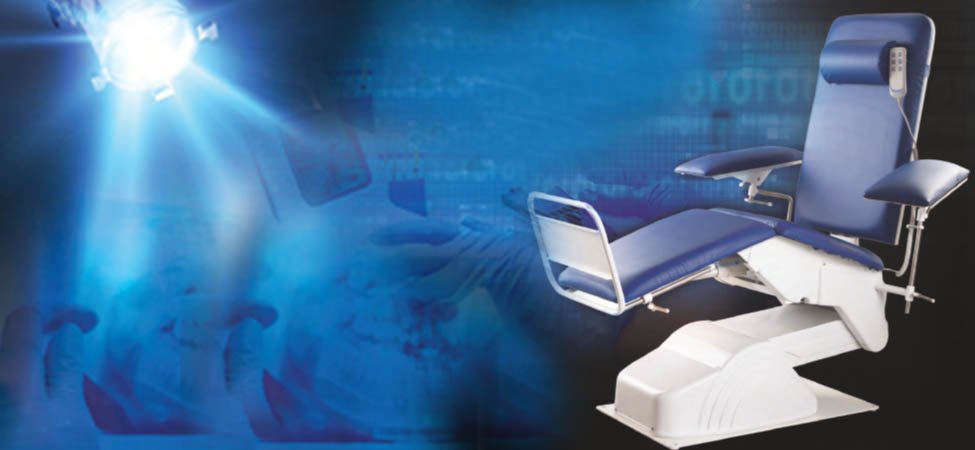Revolutionary methods for imaging. Groundbreaking uses for laser technology. The world of dentistry has seen a surge of technological applications in the past 20-30 years, but surprisingly, they are only recently becoming standard for dental practices.
Dental Economics asserts that dentists are notoriously slow to adopt new technologies. One 2013 study showed that only 5-16% of dentists used technology such as digital impression making in their practice – an astonishingly low rate, considering that this technology was being pioneered in the 1980s!
However, dental practitioners are finally taking the leap. Digital dentistry is coming to the forefront, and practitioners are gathering steam and aligning with this new paradigm to avoid being left behind by their peers.
So what exactly does digital dentistry bring to the table? And, more importantly, what can we expect next?
We’ll take a look at the recent advancements and how it’s affecting the world of dentistry, and then peek into the future to see what may be coming down the pike.
The Technological Transformation
The tech movement has extended itself to a number of processes within dentistry. One notable development has been in the realm of imaging.
For decades, the extent of oral imaging was limited to X-rays or film photography. These time-consuming and costly methods were the first to go, however, with the advent of digital imaging.
Today’s intraoral scans and digital radiography allow practitioners to quickly gather extra- or intraoral images of the mouth, then view the images electronically for less downtime and more convenience. Digital scans, in particular, take an average of only 6 minutes to complete – whereas a traditional impression takes closer to 20 minutes. Thus, intraoral scans allow for a much quicker patient turnaround, and greater practice efficiency.
Digital intraoral scans and digital X-rays also have the significant advantage of being able to create three-dimensional views – a capability that was not possible before the digital advent. With a 3D perspective on what’s going on inside the mouth and even under the gums, practitioners have a much greater ability to treat issues – even before they become issues. Additionally, three-dimensional digital imaging has paved the way for greater accuracy in digital impressions, which leads to fewer remakes in the manufacture side.
Along the same lines, the growth in digital intra- and extraoral imaging has led to an increase in CAD/CAM technology use (or, computer-aided design/ computer-aided manufacture). CAD/CAM for dentistry was first being unveiled as early as 1985, but due to the rudimentary nature of imaging techniques and software at that point, the resulting manufactures were complicated and expensive to complete. Now the advances in intraoral scans make for precise digital impressions, which may then be translated via CAD software and used to form the designs for crowns or implants. Since the subsequent designs are based on more in-depth, three-dimensional imagery, the resulting manufactures can be made quickly and with a much higher success rate. Some practitioners have estimated that they save anywhere from $4,500 - $10,000 per month since their purchase of CAD/CAM machinery – simply because they avoid lab costs, multiple patient appointments, and expensive remakes if something is not fulfilled correctly.
Laser technology has also made breakthroughs in the dental world. Brought into practices sparsely in the 1990s, this tech has only recently become more widely used. Lasers can now be used for everything from cleaning teeth to treating gum issues. Not only do lasers reduce pain in procedures, but they also create more accuracy and even boost recovery time for patients.

The Digital Workflow
Yet another advancement, per se, is the implementation of digital workflow within the dental practice.
The technological developments mentioned are by no means siloed. They are meant to support each other to create a fully digital, streamlined experience for practitioner and patient alike.

For example, restorations now can be performed seamlessly as the practitioner digitally scans the patient’s mouth, then views the images from all angles to determine the best course of action for the patient. Some scanners have the capability to allow necessary crowns or implants to be ordered directly from the digital scanner screen. The product is then designed and manufactured with CAD/CAM technology, then shipped to the dentist. This means that within a matter of days a patient can be fitted with a crown or implant – and one that is designed around every nuance of their mouth for a more customized fit.
The digital workflow can also be applied to endodontics, orthodontia, and other specialized fields of dentistry, so that no matter the issue, it can be resolved quickly and precisely. For this reason, digital dentistry has resulted in a more efficient and competitive practice, better patient experiences, and a high return on investment for the practitioner.
The Digital Trajectory
The digital movement is far from over. The technology will continue to advance and bring about even more streamlined processes and workflows. But what exactly will this look like?
At this point we can only speculate, but there are some interesting theories on the subject.
Scientific American describes the future world of dentistry as one that is largely remote: people will buy their own handheld toothbrush intraoral scanners, which can assess problems and send images to their dentist via cloud technology. The practitioner can then design and order an appropriate solution on the spot, and the patient only has to set foot in the office to have the solution fitted.
Some also theorize that, similar to the path of medical technology, oral surgeries will be guided by computers and implemented with lasers for advanced precision.
Others contend that the main change will be the material used in dental repairs; rather than using synthetic materials, some say that a living, stem cell-based material will be the new primary repair agent to help teeth heal themselves.
It’s hard to say whether these predictions are accurate or realistic, but one thing is certain: now that the digital age has finally made inroads in dentistry, we can expect that dental procedures will only become more streamlined and that patient experiences will continue to improve. And, if adopted and furthered, these advancements stand to shape the field of dentistry into one that is far more accessible and palatable for patients of all backgrounds.

